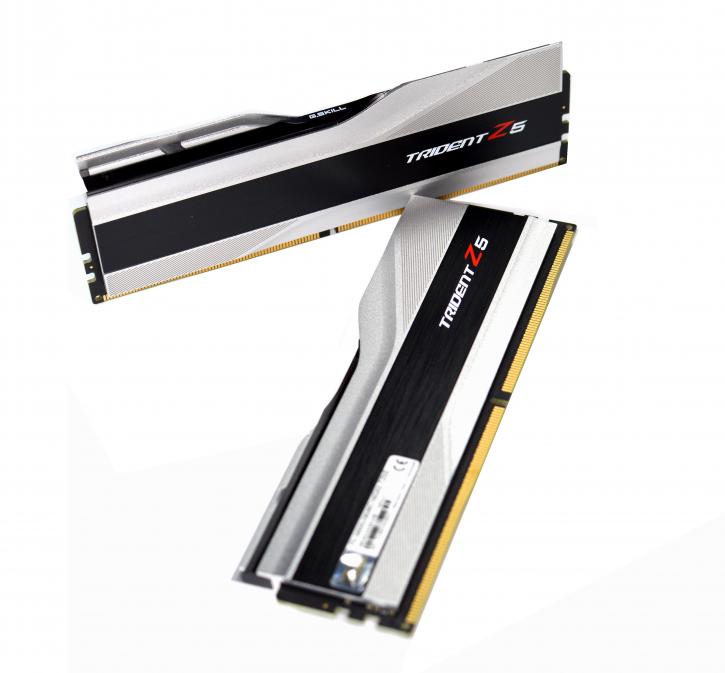Final Words & Conclusion
Final Words & conclusion
The G.Skill TridentZ5 5600 CL36 kit offers users a respectable performance already out of the box. The looks are very nice, even though there’s no RGB applicable here (but there’s also the TridentZ RGB). The heat spreader comes in black and silver; we got the latter. The range of available frequencies is very broad. The slowest module in this series operates at 5600 MHz, and the fastest one reaches an astounding 6400 MHz. Users should be satisfied with the G.Skill offer. As with the others DDR5 kits, it is aimed only at Intel users (for now).
Aesthetics
The memory chips used here come from Samsung. We achieved a nice tweaked CL36 with 6200 Mhz at 1.4 V (1.2 V is the baseline value). You can always lower the latencies further and leave the standard 5600 MHz frequency.
Tweaking
G.Skill has managed to make the TridentZ5 very nice elegant; you may opt for a Black or silver-themed heat spreader; it’s matte and looks attractive. There’s no RGB in the reviewed kit, but you can always choose the TridentZ RGB series.
Conclusion
The G.Skill kit that we checked provides a default frequency (5600 MHz) that will be enough for practically all users, and the XMP 3.0 profile makes life a lot easier. The stock performance is in a range of expected (very close to the high-end). There’s some headroom still available, so if you want more, you can try to overclock the memory even further. The reviewed kit on our Z690 platform made it possible to achieve 6200 MHz with CL36. It’s a great result; you need to remember that those are 16 GB modules. As we usually state – reproducibility is never guaranteed, and your results may vary. The low-profile heat spreader (42 mm), so you shouldn’t encounter any clearance problems with most air CPU coolers. The 32 GB option is a lot for most users nowadays. The price for this 2 x 16 GB kit is ~400 USD, which is expensive, but you need to remember that it’s high-end RAM and also from the (probably most) famous memory manufacturer. The current price for the DDR5s is very steep (mainly due to the shortage of the PMIC), and it still doesn’t look to be lower in the coming days. We can give G.Skill a “Guru3D Recommended” award for this very fast, overclockable, and capable kit. The only real downside (same as for the majority of the DDR5s) is the price that most users cannot accept for the moment, especially compared to the DDR4 kits, which don’t have much worse performance results (for now, at least compared to the current available DDR5 memories).
- Sign up to receive a notification when we publish a new article
- Or go back to Guru3D's front page.


